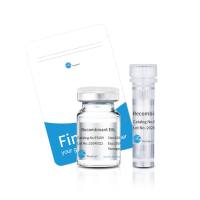Hydroxyl and 1-Hydroxyethyl Radical Detection by Spin Trapping and GC-MS
互联网
528
The detection of free radicals is often carried out by electron spin resonance (ESR) techniques. The procedure is specific and very sensitive (provided the radicals have a sufficiently long half-life to be measured). In the case of extremely short-lived free radicals, which are difficult to directly detect by ESR, spin-trapping procedures have been developed based on reaction of highly reactive radicals with a “spin trap,” generating an adduct free radical having a longer half-life and suitable for detection by regular ESR procedures (1 –4 ). A variety of spin traps have been described in the literature, each optimal for given experimental conditions or specific free radicals to be detected (1 –4 ). Hydroxyl (OH) radical detection by spin trapping and ESR procedures often has been done using 5,5-dimethylpyrroline N-oxide (DMPO) as the spin trap (5 –9 ). This spin trap very rapidly reacts with OH to produce a stable free radical adduct having a characteristic ESR spectrum (5 –9 ).









